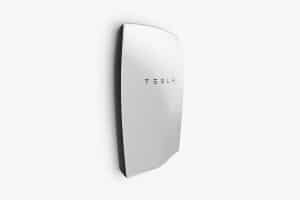 One of our favorite brands is Tesla Motors. We like it because it has many ingredients of a great brand. The name is only two syllables making it easy to pronounce and remember. The name has historical significance and product relevance. The name Tesla was taken from one of the early pioneers of electrical technology, and as a brand name is very appropriate for an electric car.
One of our favorite brands is Tesla Motors. We like it because it has many ingredients of a great brand. The name is only two syllables making it easy to pronounce and remember. The name has historical significance and product relevance. The name Tesla was taken from one of the early pioneers of electrical technology, and as a brand name is very appropriate for an electric car.
Now the parent company has taken their proven battery technology to the residential market with a new brand that is packed with those same ingredients. Powerwall as a brand name does what it says. It provides power from a wall-mounted battery. Wall-mounted distinguishes its product from the old messy and somewhat dangerous conventional lead batteries that usually sat on the floor or had to be stacked on a heavy rack due to their weight and need for constant maintenance. Everybody has a wall in their garage so the brand name communicates the method of installation which is easy to accomplish for the average homeowner.
The product itself promises to revolutionize the way we access power, especially for the increasing number of us who have invested in solar. With solar, you had two choices in the past: you could attempt to stay off the grid by storing your power in a clumsy and problematic array of conventional batteries; or you could sell your solar power back to the utility company. With this latter approach, which has been by far the most popular, you had to buy power back from the grid supplier who was basically storing it for you. Now, the power companies are complaining that they are getting stuck with the cost of maintaining the infrastructure and are bucking to increase rates to cover this expense and to offset their decrease in sales due to the proliferation of solar power producers.
Powerwall promises to seamlessly providing uninterrupted power in an outage and to offset the high grid power costs during peak hours. It also promises to store locally collected solar power for nighttime use when solar cannot be generated. Built-in switching technology keeps the batteries always full, either by charging from your solar panels during the sunniest parts of the day, or by charging from your grid power supplier when rates are off peak. It will also allow you to use and store the power from your solar system first, before you sell the excess back to the power company. This means lower electricity bills and less greenhouse gasses to produce it during peak times. The genius of Powerwall is that it acts like a resevoir to save power untill you need it while mitigating peak power grid rates.
Another thing we like about this new brand is that it’s branding is comprehensive, all the way to the product itself. Like Apple products, Powerwall branding is carried into the very design of its products. It is clean, sleek, and non-obtrusive, and with less than 8 inches of sideways protrusion into your garage space and curved edges that mold into your existing walls. This makes the product much more compelling to the average homeowner. The units are designed for both interior and all-eweather exterior installation. The Powerwall sports the Tesla logo for added credibility.
Sure, the average homeowner will have difficulty with the $3,000 per unit price tag, especially when they buy multiple units (which incidentally, gang nicely) . But prorated savings, government support when available, and reduced battery production cost from Tesla’s new Nevada mega battery plant will bring down the cost in the future. It is likely that the price of grid power is not going down any time soon.
We give the Powerwall two big toes way up for its branding, timing, and product design. Bravo!


